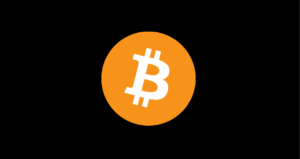As the world of cryptocurrency continues to evolve at a rapid pace, it’s no surprise that competition between different crypto projects is heating up in 2022. Investors and enthusiasts are witnessing a vibrant ecosystem where innovation and adoption drive the market forward.
One of the primary drivers behind the intensifying competition in the crypto space is the rise of decentralized finance (DeFi) platforms. These platforms offer a wide range of financial services, including lending, borrowing, and trading, without the need for traditional intermediaries like banks. Projects like Uniswap, Aave, and Compound have gained significant traction, challenging traditional financial systems and paving the way for new forms of decentralized governance and decision-making.
Moreover, the scalability and energy efficiency of blockchain networks have become crucial factors in the competition among cryptocurrencies. While Bitcoin remains the largest cryptocurrency by market capitalization, its energy-intensive proof-of-work consensus mechanism has been a subject of debate due to its environmental impact. In response, newer projects like Ethereum 2.0 and Solana are transitioning to more sustainable proof-of-stake and proof-of-history mechanisms, offering faster transaction times and lower fees.
Interoperability, or the ability of different blockchain networks to communicate and share data seamlessly, has also emerged as a key battleground for crypto projects. Initiatives such as Polkadot and Cosmos aim to overcome the limitations of siloed blockchains by enabling cross-chain transactions and interoperability, fostering a more connected and efficient ecosystem.
In addition to technological advancements, regulatory developments play a significant role in shaping the competitive landscape of cryptocurrencies. Various countries are exploring regulatory frameworks to provide clarity and guidance for market participants, fostering trust and legitimacy within the industry. Cryptocurrency projects that comply with regulatory requirements are better positioned to attract institutional investors and expand their user base.
As the crypto space becomes increasingly crowded with new projects and ideas, standout features such as decentralized governance, community-driven development, and security protocols are essential for gaining a competitive edge. Projects that prioritize transparency, user empowerment, and robust security measures are more likely to succeed in the long run and establish themselves as industry leaders.
In conclusion, the competition in the cryptocurrency market is heating up in 2022, driven by technological innovation, regulatory developments, and a growing demand for decentralized financial services. Investors and users should stay informed about the latest trends and developments in the crypto space to make informed decisions and navigate the evolving landscape effectively. By understanding the competitive dynamics of the crypto market, individuals can identify promising projects and opportunities for growth and participation in this exciting and rapidly evolving industry.

